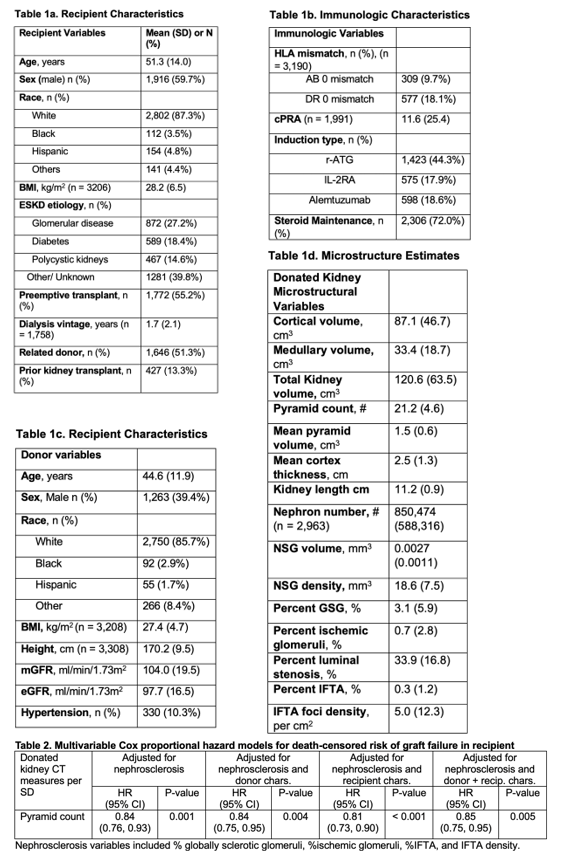Predicting long-term outcomes in living kidney donor transplant recipients using deep learning algorithm-estimated medullary pyramid count: A novel biomarker
Samy Riad1, Aleksandar Denic1, Tim Kline1, Joshua Augustine 2, Tony Lerhrs1, Aidan Mullan1, Andrew Rule 1, Naim Issa1.
1Nephrology and Hypertension , Mayo Clinic Rochester , Rochester, MN, United States; 2Nephrology and Hypertension , Cleveland Clinic Foundation Cleveland, Cleveland , OH, United States
Background: Deep learning estimated medullary pyramid count, a radiological biomarker, is a strong predictor of post-donation long-term outcomes in living donors. Herein, we examine the association between the pyramid count of the donated kidney and the long-term recipient outcomes.
Methods: We applied our previously validated deep-learning algorithm that accurately segments and enumerates individual medullary pyramids on contrast-enhanced computed tomography images of living kidney donors pre-donation. Between 2000 and 2022, 3209 live-donor kidney recipients were analyzed. Recipient, immunologic, recipient and microstructure charachtersitics are detailed in tables 1 a through d. Multivariable Cox proportional hazard models examined the association between medullary pyramid count with death-censored graft failure in recipients adjusted for nephrosclerosis in the donated kidney as well as pertinent donor and recipient clinical characteristics.
Results: 3209 recipients were followed for a median 5.0 years (25%ile, 75th%ile) (3.0, 7.9) and had 404 graft failure events, 62 delayed graft failure and 365 acute rejection episodes. Medullary pyramid count was an independent predictor of death-censored graft failure after accounting for both donor and recipient clinical characteristics along with other nephrosclerosis metrics (Table 2).
Conclusion: In this comprehensive study of live-donor-recipient pairs, the count of donated kidney pyramids emerges as a radiological biomarker, exhibiting robust predictive power for death-censored graft failure. This prediction remains independent of relevant clinical characteristics in donors and recipients and other microstructural metrics.
[1] Biomarker
[2] Pyramid count
[3] Recipient outcome
[4] Living donor
[5] AI/Machine learning
